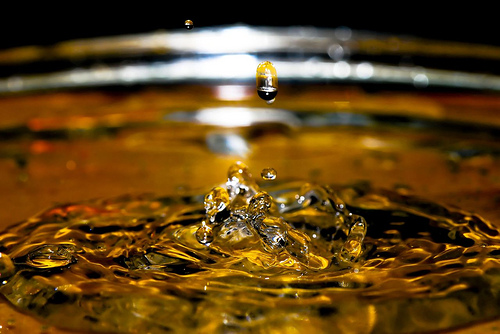Did you know that scotch is sometimes sold in 1.75L bottles? Until the other day, when I stumbled onto a 1.75L bottle of Glenlivet 12, I had no idea it came in such quantities. I enjoy Glenlivet 12, the packaging made it quite affordable, and while it isn’t the world’s most exciting scotch, it makes for a great everyday dram. Sometimes you want a little Spey finished with a spicy bite!
Speaking of that distinct spicy bite, I also discovered this educational article on Popular Science where they made use of a rotary evaporator to pull out the various components of scotch, specifically Glenlivet scotches, to investigate individually. They started with “white dog” unoaked/unaged Glenlivet whisky (aka “new make” or “cleric”), then continued with the 12-year, and then the 15 and 18. With each, they put it through the rotary evaporator to separate the whisky.
Running a liter of Glenlivet 12 through the machine, Dave pulls off the first 600ml into one vessel and the remainder into a different one. We taste the two.
The elements drawn from the oak, including all of the brown color, are less volatile, so they remain in the 400ml batch. The 600ml batch Dave calls “gray dog,” since it is a re-approximation of the white dog: a startling “deconstructed whisky” that’s been aged for 12 years in oak and then had many of the effects of the oak removed. It also has the bulk of the alcohol, concentrated to 120 proof from the original Glenlivet’s 80 proof. Its flavor is mellower than the white dog’s, but that youthful papery flavor, which was imperceptible in the non-evaporated Scotch, is back in evidence. The vanilla tones that the oak contributed are deeply muted, leaving a soft, ill-balanced, cloying clear spirit that reminds me of souring milk.
The article is fantastically entertaining to read.

